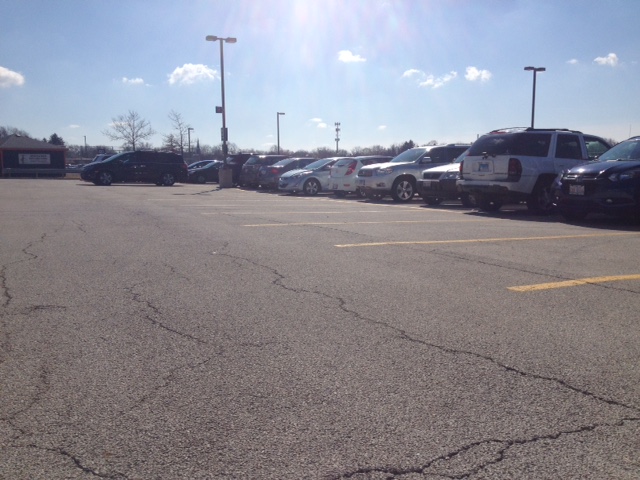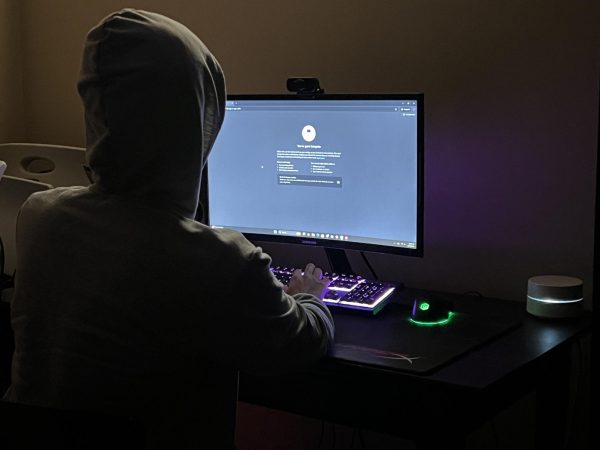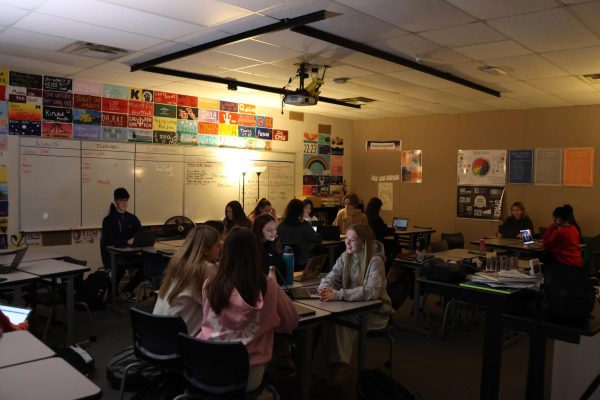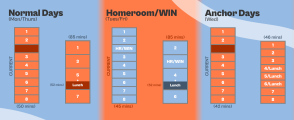Column: The parking problem at NNHS
It’s that time of year again; the temperatures are rising, second semester is under way, and countless juniors are complaining that it’s getting harder and harder to find a parking spot. While it’s never easy to get a spot on either Benedetti Drive, Pacific Drive or 5th Avenue, the problem is exacerbated in the winter and spring by the fact that many sophomores get their licenses over winter break, making the competition for a good spot even fiercer. While it may seem like a relatively small complaint, this battle for parking is actually part of a larger issue.
Students are losing out on valuable hours of sleep due to the early wake-up time required to secure a parking spot. It’s no secret that teenagers need a lot of sleep — and that they almost never get even close to enough. According to the John Hopkins Medicine website, teenagers need anywhere from nine to 9 ½ hours of sleep each night, something that is made almost impossible by Naperville juniors’ hectic schedules. It is widely acknowledged by students that in order to secure a decent parking spot, one has to get to the school between 6:30 a.m. and 6:40 a.m. A typical junior wakes up at 5:30 a.m. or earlier, depending on a number of factors, to get ready and drive to school. If, for instance, they are getting home after extracurriculars at 5:30 p.m., showering, eating dinner and then doing three to four hours of homework each night, getting an adequate amount of sleep is challenging.
NNHS junior Jessica Komar has experienced this firsthand. She usually gets to school at 6:55 a.m., yet she still struggles to get a parking spot that is close to the school and must walk 10 to 12 minutes from her car to the school. She would like to get at least seven hours of sleep, but only manages five hours most nights.
“If I could get to school later and get better parking, yes, I would definitely get more sleep,” Komar said.
Following this morning routine, students are set up for elevated stress levels and a multitude of other issues caused by sleep deprivation, including an increased risk for high blood pressure, Type 2 diabetes and anxiety. With this in mind, it is clear that the school should take action on this issue.
There are two practical paths the school could pursue. The first one, to start the school day later, has been widely discussed by the district, with no clear conclusion on the matter. However, there is a more straightforward way to deal with the problem — utilizing the excess room in the staff parking lot. The staff lot is rarely completely filled, which is why it would be a practical solution for the school to designate part of the staff lot as parking spaces for juniors. Theoretically, the spots would be given out via a lottery system, where juniors would have to meet academic standards and agree to carpool with another junior in order to qualify. This would not only alleviate stress for the juniors who secured a spot, it would also result in less cars competing for the limited spots near the school, benefiting everyone, not only the juniors who were awarded parking passes.
The one major issue with this idea is that there is bound to be negative feedback from teachers about losing parking space. However, I believe that their sacrifice will be repaid with students who are not only more alert and engaged in class, but who are also happier and less stressed.
This small change has the potential to change the lives of many students for the better. Juniors have enough stressors when they are actually in school, shouldn’t we try to alleviate the pressure that comes with just getting here?

Annie Meyer is a senior at Naperville North, and is so happy to be a part of The North Star staff. She is beyond honored to be the Managing Editor this...






